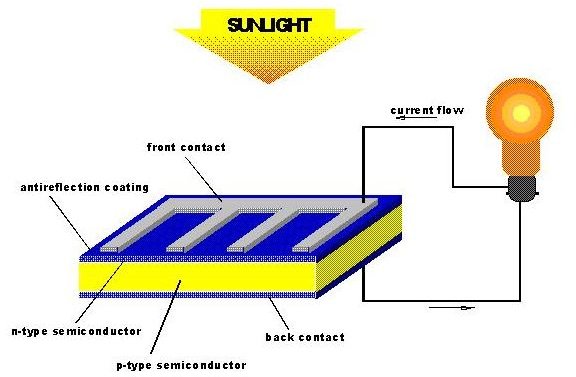How do Solar Cells Work?
Everyday we use calculators and other such devices that run on solar power. As long as the light in there, they seem to be running fine. But trying using a calculator that is run on solar power extensively on a cloudy day? No matter how much we try, they seem to be hell bent on giving us a tough time at work.
Ever tried wondering on how solar energy is converted into electricity or battery power to run a calculator?
Solar energy that is used for calculators and other such devices that run on solar energy is first captured in cells called as solar cells. Solar cells are devices that are used to covert solar energy into electricity. Solar cells are made up of semi conductors like silicon.
Solar cells are also called as photovoltaic cells. Sometimes the term solar cell is reserved for devices which are intended specifically to capture energy from sunlight, while the term photovoltaic cell is used when the source of energy is not specified.
Sunlight consists of particles of solar energy called as photons. These photons vary according to the amounts of energy within them which corresponds to the different wavelengths of the solar spectrum. When these photons strike a solar cell, they may be reflected or absorbed, or might just pass through. Only the absorbed photons generate electricity.
When the photon is absorbed by the solar cell, the energy of the photon is transferred to the electron present within the semi conductor of the solar cell. With this new energy, the electron is able to jump out of the atom of which it is a part of, to become a part of the current in the electrical circuit.
By leaving the current position in the atom, the electron causes a “hole”. The semi conductor is made up of multiple layers. One side of the layer is either dope with boron or with arsenic. The layer that is doped with boron is called as n-type layer and the one that is doped with arsenic is called p-type layer. The n-type layer has a surplus of free electrons and the p-type layer has a deficit of electrons.
The p-type layer and n-type layer are pressed closely against each other and linked by a wire connected to an external load. This creates a circuit in the solar cell.
When the sunlight of the correct energy level hits the n-type layer, which is usually on top of the solar cell, it stimulates some of the free electrons present in the n-type layer, which break loose from their natural state of pairs and flow across the boundary between the layers to create a current. This only works if the two layers of the solar cell are pressed directly into each other.
The current flows through the p-type layer into the wire, which goes to the load, generally used to store electricity. After flowing through the load, the current continues back into the n-type layer, which is lacking in electrons in some areas due to the current. The process continues and current is generated without any mechanical input.
[ Img Courtesy https://www.pv.unsw.edu.au ]
